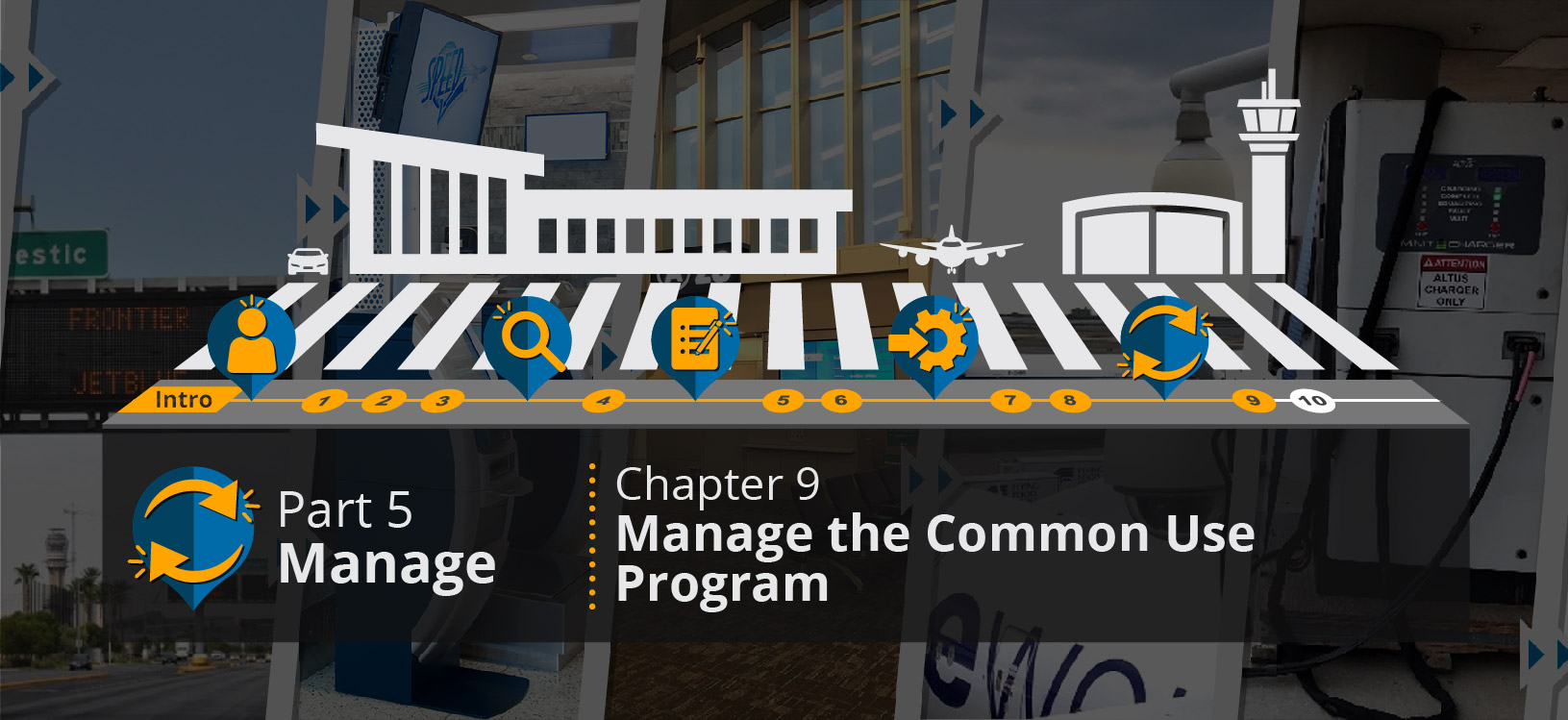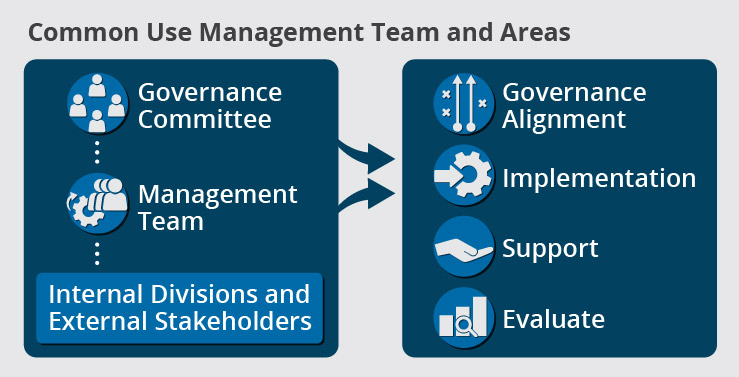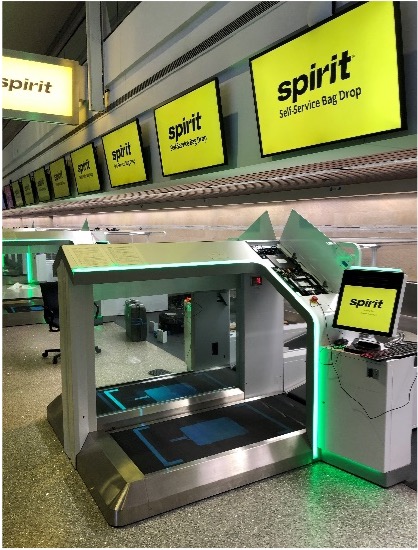
Management Team
Management of the common use program requires a series of interrelated processes that ensure that the common use program remains in alignment with its governance objectives. It is also best to formally identify a team that is responsible for these areas. A common use management team is needed to create the functional alignment between the various internal stakeholder divisions and the common use governance committee, as shown in Figure 9.1.1. This figure also presents the key areas of common use management, as presented in this Deep Dive page.

Figure 9.1.1: Management Team and Areas
As an example of a common use management team, one airport regularly maintains a group that met quarterly to discuss common use space allocation. It was a large group of individuals representing virtually all divisions at the airport, including airside operations (the group that chaired the meeting); ramp control; terminal operations; landside operations; facilities (a few disciplines, including the baggage handling system, power, building management, etc.); security; business (airline and concession contracts); finance; air service development and public affairs; and technology and enterprise resource planning geographic information systems. It was the single largest regularly scheduled internal meeting-and needed to be, given the breadth of impacts created by shifts in airline operations. These meetings were very productive, and the tentative plans developed at them were then refined and shared out with external stakeholders.
At another airport, the team includes representation from two airlines, which make up 85% of the flight activity, and has an ongoing focus on ensuring that their needs are being met.
Ideally, each division within the airport would provide representation as part of a collective management team that maintains responsibilities for that division's inputs to the common use program. These responsibilities include the following examples:
| Stakeholder Group | Role in Common Use Management |
| Executive | Executive leaders need to ensure the airport vision and objectives are communicated and integrated into the common use program and provide visible support to encourage broad participation airport-wide. All major programs will need this high-level support from those involved in airport strategic planning, business planning, and capital development planning to advise from a financial and vision perspective. |
| Airside, Terminal, and Landside Operations / Facilities / Maintenance / Planning | This group collectively works to address the physical and operational aspects of a common use program, such as the interior and exterior facilities, baggage handling systems, passenger boarding bridge, physical signage, and building management. They address the need for adaptability and flexibility through program development and/or expansion. They also conduct facility planning and design to maximize the efficiency of limited space and resources.
This group also holds the responsibility for establishing and maintaining standardized operational common use best practices, providing and managing resource assignments, and managing the power strategy from a holistic perspective. |
| Business / Properties / Air Service Development | This group addresses the business aspects of a common use program. They address financial impacts, leasing strategies, and concessions, as well as legal, safety, and risk implications. The air service development group ensures airline buy-in through partnerships and collaboration, as well as understanding and addressing the unique needs and requirements of each airline operating at the airport. |
| Public Affairs / Customer Service / Passenger Experience | These divisions of the airport address the entirety of the common use program from the passenger experience perspective. They work to incorporate the passenger and stakeholder experiences and expected level of service to provide a seamless passenger journey. Key to this perspective is the ability to accommodate additional service in a flexible manner rather than squeezing that service into a static leasehold situation where the passengers are forced to sit on floors, concessions are over-run, and planes hot hold off gates for extended periods of time awaiting an opening. In addition, they address passenger needs for wayfinding and mobile communications, as well as airport passenger benefits programs (e.g., parking and e-coupons), and constantly look for other passenger experience enhancement opportunities. |
| Technology / Innovation | The technology group is often considered the “owner” of common use because most airports think of common use as a technology system. However, in a holistic common use program, the technology and innovations groups act as a partner to ALL of the airport divisions in providing the needed systems and support to facilitate the common use of the facility. They enable each of the common use program elements above that make up the traditional passenger processing common use systems. Internally, they provide common use program resources to the airport divisions, such as data sharing, remote video, and audio, visual, and electronic communications capabilities through flexible and adaptable telecommunications infrastructure (wired and wireless). Externally, they provide data sharing among customers and stakeholders. They also identify current and emerging gaps in technologies and solution delivery business models and help define new common use opportunities throughout the airport. |
Consider these example responsibilities as a general breakdown to apply against the unique dynamics in your airport organizational matrix. As you build your common use management team, make sure that the responsibilities of each group are well understood and that there is continuity between each group to avoid operating in silos.




